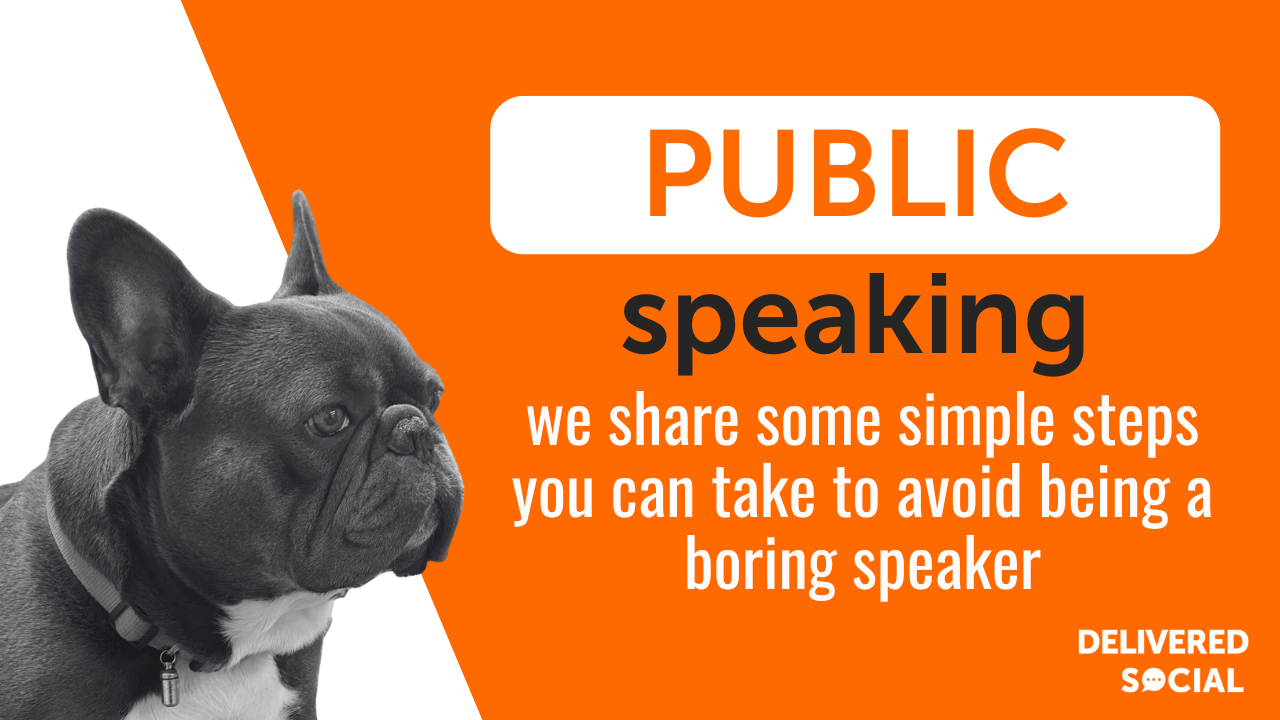
We’ve all been there. In a meeting, a company presentation, a conference. Fighting to keep at least one eyelid open, zoning out as the speaker drones on, and on, in the same tone. It’s the very definition of monotonous; a voice that is unchanging in pitch and without intonation.
How can you avoid being that speaker? Let’s explore those cavities….
Your voice is an amazing instrument. In the course of a normal working day you deliver important messages, tell stories, mention something that affects you, automatically selecting a voice tone that reflects the message. Yet when we stand up to speak, perhaps to address a meeting, with heart racing and adrenaline flowing, it’s easy to for that automatic voice tone selection ability to switch off now that we are ‘Public Speaking’.
4 Voice Tones
So why do anything about it? Surely we want to be more effective when we stand up to speak, to have more impact, to reach our audience? To increase the opportunity of doing more business? Let’s look at 4 voice tones, how we use them in normal life, and straightforward techniques for making them part of our public speaking toolkit.

Don’t be a boring speaker! Follow these simple tips
1) The Head Voice – for stories
Here’s the scenario. You’ve got the most amazing, juicy, hot-off-the-press story to tell. You’re in the café / bar with your friends, round the table with your family, or grabbing a coffee in the office kitchen with your colleagues. Do-you-say-it-in-a-flat-mono-tone-voice? No, of course you don’t. Apart from anything else, you’d soon be trumped by someone else’s story! You’re grinning with anticipation, your eyes are shining, your ‘Hey, listen to this!’ is almost delivered from your eyes as you bubble over with excitement….
That’s the head voice. In ‘normal life’ we would automatically take our voice up into our head, up into the cavity that resonates with excitement. So when we want to catch our audience’s attention, impart exciting new information, tell a story about our business, why shouldn’t we do the same?
[code_snippet id=6]
2) The Chest Voice – for important messages
Scenario 2. You’re the Captain / Team Leader, the game is going, shall we say, less than well; there are ‘things to be said’ at halftime. I’d suggest you will probably not be speaking in either a-flat-mono-tone-voice, or an excited story voice. No. I can see you now; firm stance, strong chest, powerful delivery, message clear, message understood.
That’s the chest voice. Switch scenario now to your Board / Team meeting, where you have a key message to deliver. That’s the voice to use.
3) The Heart Voice – for softer messages
Different scenario here. Let’s step out of the office for a moment, into one of those times for grown-ups; difficult times of tragedy, pain, and heartache. Here the voice is often soft, often gentle; it comes from the heart and resonates with those around us.
I recall being on a workshop where we broke into groups to discuss difficult times that involved our families or children, to explore how we use this voice, the heart voice. Easy to track the date of that event from the peak in the share price of tissue manufacturers….
Sometimes in the workplace, there is the need to talk of painful issues, to empathise with our audience. Think of talking from the heart, and (metaphorically) put your voice there.
4) The Gut Voice – the Chairman’s message!
We’re back at the conference. Interesting presentations, a brilliant Keynote & workshop on public speaking (I wonder who delivered that…?). It’s time for the Chairman to briefly sum up and send us all on our way.
If you are in that role, there may be an expectation on you to deliver something brief, deep, and meaningful. Let’s explore ‘deep’ for a moment; not so much the content – that’s for another workshop – but matching the voice tone to the message we want to deliver, as the nerves of the moment can affect our intonation. Dropping our voice, not in volume but in direction towards our gut as we impart those final words can add a touch of authority to our message, as befits a Chairman.
So how do we put this into practice?
A practical suggestion. When you are jotting down notes for your next meeting, next presentation, whether a full-blown typed up speech or simply scribbles on the back of an envelope, here’s a simple three-step process:
- Take a moment to think about the impact of your words
- Consider what message do you want your audience to hear?
- Against that paragraph, pencil the appropriate voice in the margin, and use it.
Let me know how it works for you; I would welcome hearing your story.
** Ges Ray is Founder of Speaking in Public. From a career lifetime combining commercial roles with public speaking, Ges delivers practical workshops to a range of clients, providing a toolkit for business delivering the confidence to stand up and address clients & meetings, confidence to present, confidence to network to win business.
Get in touch – ges.ray@speakinginpublic.info | 0794 108 3722 | LinkedIn | Twitter | Website
Interested In Working Together?
Introducing Delivered Social. We’re The Most-Rated Digital Agency In Surrey & Hampshire – We’ve Got To Be Doing Something Right.
Delivered Social is a digital marketing agency with one mission—to help businesses grow. We’re famous in Guildford and Portsmouth for our social clinics. We believe in free advice. We build lasting relationships because our team prides itself on being helpful, which our clients appreciate.
If you are looking for a new website or an agency to manage your social media presence, we can help.
If you need something slightly different, here's a super handy list of all our services, or you can always email us.


















